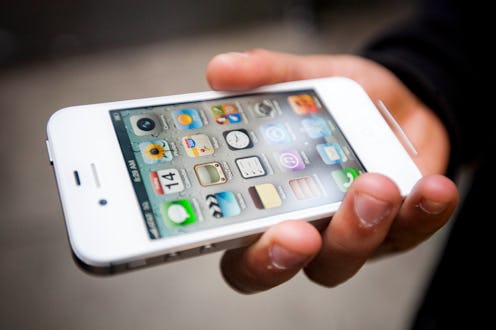Life
How Do We Make Niche Dating Apps Better?
Nowadays there are so many dating apps out there you'd think no one ever met each other in person anymore — and maybe they don't. But as Elliel Cruz points out at Mic, apps for religious users, such as the Christian app Collide, sometimes fall short. Which is a shame, because dating apps and sites that cater to specific communities can be a great way to find connections that just feel more meaningful than the never-ending, shallow swiping system of Tinder.
Still, though, in trying to branch out to specific communities, it isn't enough simply to recreate Tinder with a limited user pool and call it a day. For instance, as Cruz notes at Mic, Collide, which is meant for Christian singles, is more of "a shallow carbon copy of Tinder" than something good for "meeting the real-life dating needs of religious young people." The app functions mostly like Tinder, but includes information such as a person's favorite Bible verse — and as many religious young people are saying, that isn't really enough to make it a meaningful dating experience.
The flaws might have something to do with the fact that none of the founders are Christian themselves.
So what does it take to create a successful dating app for a niche community, whether it's a community of faith or people with similar interests or lifestyles? Here are a few ideas.
1. The Creators Should Be Part of That Community
How do you find out whether Christian young people think of a favorite Bible verse as a meaningful way to communicate who you are? Easy! Just actually be part of the Christian community. The most successful niche dating apps are bound to be ones created by people who actually understand some of the nuances of the community they are trying to reach, rather than relying on stereotypes. For instance, Ishqr, the Muslim dating app geared towards the "marriage-minded," was founded by Muslim American Humaira Mubeen and seeks to reconcile the different dating approaches of young Muslims with those of their parents. Mubeen is picking up on the needs of her own community, rather than relying on second-hand information about Muslim Americans.
2. Adapt, Don't Copy
Yes, we get it, Tinder is very successful and everyone alternately loves and hates it. But if you're going to make a new app, it's not enough to make it exactly like Tinder except more exclusive and with some superficial efforts to cater to a more specific audience. For instance, take the lesbian dating app Dattch, where users swipe through not photographs, but profile boards with images representing interests and hobbies. The women who designed the app found that while women who like women are still visual, users were more responsive to representations of who someone is as a person, rather than just what they looked like. It's that kind of idea — taking an existing model and adapting it based on the users you're hoping to attract — that more dating apps should try.
3. Take Advantage of the Smaller Dating Pool
Part of the reason Tinder works is because it has so many people that you just want to keep scrolling — partly because the large of large numbers says that there's bound to be someone you like in here, right? But with a smaller dating pool — one where everyone presumably has something in common already — it can be easier to slow down, take your time, and put a little more thought into a match. That, in turn, opens up a lot of possibilities. Maybe the app stresses profile visits more. Maybe users can "meet" within the app based on further interests. With fewer people, the way things function can change up, too.
4. Encourage Deeper Connection
Tinder is great mostly because you can use it however you want, for whatever you want, from looking for a hook up to searching for a soul mate to just trying to find someone to shovel your walk. But if you're on an app specifically for like-minded people, chances are you're looking for something at least kind of meaningful. That means that apps should encourage people both to post more information than your average Tinder profile, as well as to take a little more time than a swipe. Plus, it should be designed to make talking to this other person easy.
Images: Giphy (4)
